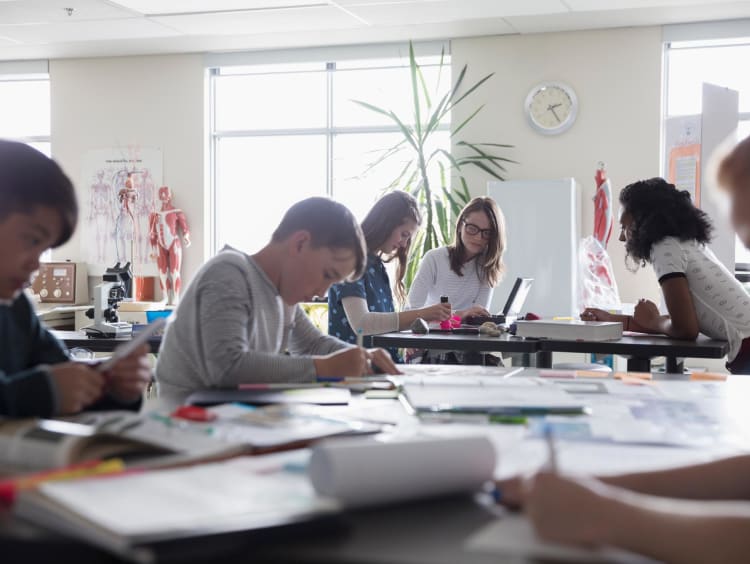Setting Up a Makerspace | 3 Things to Consider

Makerspaces have been growing in popularity lately. The spaces are typically set up in a school's library and used by students to make, learn and explore. The spaces can include high tech computing tools or hand tools. They can also be designed to include no tools at all, requiring students to build with common materials and stretch their imaginations.
Some of the high tech tools a makerspace might include are 3D printers, laser cutters and Smart boards. Makerspaces with more traditional tools might include sewing machines, soldering irons, drills, hammers and saws. No-tool makerspaces have materials like cardboard, yarn, duct tape, building blocks and art supplies.
Makerspaces are set up to help students explore projects of interest and help them develop the 21st century skills needed to be successful in jobs of the future. Makerspaces also focus on STEM skills and provide hands-on learning opportunities to make abstract ideas more concrete.
If you are ready to bring a makerspace to your school, here are some things to consider as you set up your space.
1. Purpose
Decide what the purpose of the space is going to be. Is it a collaborative space for students to complete assignments using tech that is not available in classrooms? Is it a place for students to learn how to use handheld tools to construct useful equipment? Is it a place of imagination and exploration? Use student and teacher input to decide how to make the space useful.
2. Place
Consider how the layout of the space will address the purpose. If it is going to primarily function as a collaborative space for academics, you will want places for groups of students to meet. You will need tech and collaboration tools like whiteboards and projectors. A makerspace like this might look a little like a coworking space for entrepreneurs and businesses. A tool-based makerspace will need lots of outlets and space for students to safely use tools. This type of space might look like a workshop, while a creative makerspace might look like a thrift store or children’s museum with boxes of junk materials and places for students to get creative and experiment.
3. People
Once you decide on a purpose, you have to figure out who is going to run the makerspace. Collaborative academic spaces work well in libraries. Librarians are usually expert technologists and know how to support students in academic research. A tool-based space needs to be run by someone with strengths in STEM and construction. This leader will not have to tell students what to build, but they will need to teach students about basic safety and equipment usage. A creative makerspace could be run by anyone at the school who has a passion for entrepreneurship and creativity.
Look to the staff to find out who has the right skills for your initial launch. You may find that the teachers are so engaged with the makerspace that they are a natural fit to lead the space.
Designing spaces for students to tinker and create will engage them in new ways and encourage future innovators. If designing and setting up a makerspace sounds like something you would love to take on, check out the Master of Science in Instructional Technology, Master of Education in Secondary STEM Education or Master of Arts in Curriculum and Instruction degrees at Grand Canyon University.
To learn more about how Grand Canyon University’s College of Education helps school leaders set up the best learning environments for students, visit our website or click the Request Information Button on this page.
The views and opinions expressed in this article are those of the author’s and do not necessarily reflect the official policy or position of Grand Canyon University. Any sources cited were accurate as of the publish date.


